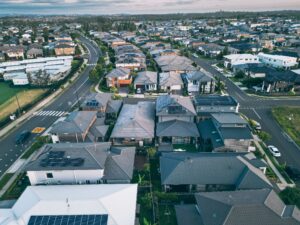FireFly Wins Green Light in Canada: Is the Green Bay Project Now a Breakthrough?

FireFly Metals Ltd (ASX/TSX: FFM) has achieved a key milestone by receiving environmental release approval for its proposed 1.8 Mtpa processing plant at the Green Bay Copper–Gold Project in Newfoundland and Labrador. With that regulatory hurdle cleared and a strong series of high-grade drilling results now published, the project appears to be entering a new phase of momentum. For investors, these developments are noteworthy because they reduce a major component of project risk, potentially accelerate timelines and broaden funding options, thereby shaping a narrative that suggests the Green Bay project may be transitioning from pure exploration to early-stage development. That said, the question remains whether the project genuinely qualifies as a “breakthrough” in its field or whether further execution risks still await.
What Are the Best Copper and Gold Stocks to Invest in Right Now?
Check our buy/sell tips

First Principles: What the Approval Actually Covers
The provincial environmental release allows FireFly to advance detailed design and permitting for its 1.8 Mtpa processing plant and related site infrastructure, a crucial precursor to future mine expansion approvals. The provincial Environmental Assessment Bulletin confirms that the project’s scope, expanding mining operations and associated infrastructure, has passed the government’s assessment process, enabling FireFly to pursue the specific construction and operating permits that follow. This is the most consequential regulatory gate in the province’s pathway and is widely regarded by developers and financiers as the hardest single approval to secure.
In parallel, FireFly disclosed market-facing details: authorisation for a 1.8 Mtpa processing plant, with the company highlighting that the approval significantly de-risks the development route and sets up a period of design optimisation and project execution planning. On the investor-relations side, the company and several independent outlets amplified the same message, that the approval moves Green Bay onto a “clear pathway to production”, positioning FireFly for upcoming resource, study, and financing milestones.
Metallurgy and Recoveries: Confirming Process Viability
While regulatory progress is critical, a mining project’s viability is often determined by how well the ore can be processed and converted to saleable metal. FireFly Metals reported metallurgical test-work showing over 98% copper recovery and over 85% gold and silver recovery, demonstrating strong processing potential for the Green Bay sulphide system. For a sulphide copper-gold deposit, this level of recovery is meaningful; it suggests the processing-plant design may not need significant de-rating, the operating-cost base may be more predictable, and the pay-metal recoveries could deliver premium cash flow relative to peers with lower recoveries.
In addition, the high recoveries improve lender and offtake-partner confidence because they reduce the margin of error in the feasibility-study phase. For investors, this means the project can now shift closer to economic modelling with fewer “unknowns” in this domain. The combination of a high-grade ore body, good recoveries, and regulatory approval forms a triple axis of strengthening project value, which supports the case that Green Bay may be moving into development rather than exploration mode.
Geology and Grade: Why the Drill Hits Matter
FireFly has continued to publish high-grade, thick copper-gold intersections from underground drilling at Green Bay, including one of its strongest intercepts: 49 m @ 6.1 % CuEq (4.9 % Cu and 1.3 g/t Au), including 14.3 m @ 13.7 % CuEq (10.6 % Cu and 3.2 g/t Au), demonstrating exceptional grade continuity. The company also reported step-out drilling that extended known mineralisation by more than 650 metres, keeping the system open at depth and along strike. In resource-growth stories, thickness plus grade plus continuity is the combination that can move the needle on both scale and mine-scheduling flexibility.
These results arrive against the backdrop of sustained drilling momentum. Coverage across industry outlets and FireFly’s news flow confirms the company is running a multi-rig programme designed to both upgrade resource classifications and test growth targets ahead of the next Mineral Resource Estimate. Such sequences, approval, drilling, and study tend to create stacked catalysts, a setup that often draws generalist funds into a name that previously screened as “too early”.
Current Resource Framing and Why It’s a Starting Point
Green Bay already carries a significant resource base under JORC (2012)/NI 43-101 standards. FireFly reports the project currently hosts 24.4 Mt measured and indicated at 1.9% CuEq for ~460 kt CuEq, plus 34.5 Mt inferred at 2.0% CuEq for ~690 kt CuEq. For investors, these tonnage and grade figures anchor the initial production scenarios that a scoping study can model, while drilling aims to push tonnes up the confidence curve and add scale. Resource size, head grade, and metallurgical recovery are the three quantitative levers most visible to the market at this stage.
Funding Strategy: Ensuring the Pipeline Has Fuel
A project remains only as strong as its funding pipeline. FireFly raised C$25.8 million (~A$28.8 million) through a Canadian bought-deal financing and an additional A$46 million equity placement in June 2025. Together, these financings strengthened FireFly’s balance sheet and funded ongoing drilling and study programmes. These raises follow a string of equity placements and flow-through structures common in Canadian markets, providing tax advantages to investors and financial flexibility for exploration through 2025–26.
From an investor’s vantage point, funding success is a positive sign: it indicates that capital markets believe in the project’s thesis and are willing to invest. It also reduces the risk of dilution or funding delays as the project advances. Securing funding at this stage is consistent with a company transitioning towards development and not simply exploration, reinforcing the argument that Green Bay may be entering a breakthrough phase.
Strategic Context: Copper Market Tightness Helps
Macro context strengthens the micro story. Industry commentary has emphasised structural copper tightness due to slowing supply growth and accelerating demand from grid build-out and electrification. Projects capable of delivering high-grade, high-recovery copper units in a Tier-1 jurisdiction often command premium attention from majors and trading houses seeking pipeline optionality. Green Bay’s position in Newfoundland, Canada, a mining-friendly region with established infrastructure, adds jurisdictional quality to grade and scale. This combination can matter to valuation as the project advances through studies.
Why Environmental Approval Is a Valuation Catalyst
Investors often model a discrete step-up in risked NPV when a project secures its principal environmental clearance. The rationale is straightforward: the probability-weighted chance of eventual cash flow increases, expected timelines compress, and financing sources widen. For Green Bay, the environmental release for the 1.8 Mtpa processing plant and the province’s positive assessment outcome reduce the “binary” risk that can keep developers in valuation limbo. It also simplifies messaging to potential offtakers and lenders, who now focus on execution risk rather than permitting risk.
Key Upcoming Milestones to Monitor
Looking ahead, there are several milestones that investors should watch closely as they will likely act as value levers. First, the release of the Scoping Study (or equivalent economic study) will provide the first full public look at the mine plan, capex estimate, operating-cost assumptions, mine life and processing throughput. FireFly has indicated a target for such a study following the drill and metallurgical programmes. Second, the next updated Mineral Resource Estimate will reflect the impact of recent drilling and may expand tonnes or lift grades or both. Third, follow-on permitting, offtake discussions, and project-financing arrangements will signal whether the project is truly moving into execution. Consistent positive news flow across these milestones would support the narrative of a breakthrough.
Remaining Execution Risks
While the structural position of Green Bay is strong, investors should remain aware of the residual risks. First, capital-cost escalation is always a threat; if detailed engineering increases capex significantly, the project’s internal rate of return may come under pressure. Second, mining and processing risks such as ground conditions, stope design, dilution, continuity of high-grade zones and actual recoveries in bulk production can all deviate from drill-and-test estimates. Third, market risks remain: copper-price downturns, cost inflation (labour, consumables, logistics), or slower-than-expected funding flows could delay or reshape the project. Lastly, while the major environmental release is secured, detailed permits and community/Indigenous agreements may still be required and can affect timelines or cost. As with all mining developments, execution remains the critical phase.
Jurisdiction and ESG: A Reassurance for Investors
Operating in Canada brings advantages for a mining developer: stable government, transparent regulations, established mining infrastructure and legal frameworks. Newfoundland and Labrador is ranked among the top global mining jurisdictions, according to the Fraser Institute’s 2022 Annual Survey of Mining Companies. FireFly’s approval outcome suggests that the company’s environmental and social licence-to-operate requirements are on track. For investors who apply ESG (environmental, social, governance) filters, this factor lowers the governance risk and increases the project’s attractiveness to institutional funds and strategic partners. Good ESG credentials may not guarantee success, but they do widen the pool of potential capital and reduce the hurdle for future partnerships or offtake deals.
Funding, Capital Structure and Market Access
FireFly Metals’ ability to raise capital and secure funding is critical in the development phase. The company has shown success in this regard: in June 2025, FireFly announced a C$25.8 million (~A$28.8 million) Canadian bought-deal financing alongside an A$46 million Australian placement, supporting ongoing drilling and engineering at Green Bay. From a market-access standpoint, FireFly’s listing on both the ASX and TSX increases its visibility and liquidity among both Australian and North American investors. For development-stage mining companies, being able to tap multiple markets and maintain a robust capital structure is a differentiator. Investors should monitor dilution risk, but the current funding trajectory is supportive of the next phase of work.
What Could Deliver a Re-Rating for the Stock
Several catalysts could deliver a re-rating for FFM shares. The release of a credible Scoping Study showing attractive economics would likely drive revaluation. A materially improved Mineral Resource Estimate, lifting tonnes, grade or confidence, would also strengthen the valuation case. Construction-ready permitting outcomes, offtake or strategic-partner announcements, and alignment of funding or debt/earnings modelling all contribute to the de-risking narrative. Given that the environmental release for the 1.8 Mtpa plant has already been obtained, these next steps may prompt the market to shift from speculative to execution-phase valuation multiples.
What Could Go Wrong
Investors should still weigh scenarios where capex rises on detailed engineering, unit costs drift on labour or consumables, or variability in ore domains trims recoveries versus bench-scale results. Copper-price weakness or risk-off markets can widen funding gaps or press pause on partner negotiations. Any additional conditions or delays in subsequent permits could push timelines. These are not unique to FireFly; they are systematic risks for developers. The difference is that Green Bay’s high-grade profile and approvals tend to make funding discussions more robust than for lower-grade peers without permits.
Key Takeaways for Investors
Green Bay now carries the two attributes that most influence early development value: permit momentum and grade credibility. The environmental release for the 1.8 Mtpa plant answers the jurisdictional question; +98 % metallurgical recoveries address the processing question; and thick, high-grade intercepts address the geology question. This triangulation is uncommon at this stage and supports a view that the project has shifted into a breakthrough phase, provided FireFly executes the next steps on schedule and within cost bands. The near-term catalyst stack, resource update, Scoping Study, construction permitting, and continued drilling offer multiple opportunities for value recognition if the underlying results align with expectations.
FAQs
- Has the project actually received environmental approval?
Yes. The Province of Newfoundland and Labrador issued an Environmental Assessment Bulletin granting environmental release for the 1.8 Mtpa processing plant, allowing FireFly to proceed to detailed permitting and design work.
- Are the metallurgical results good enough to support a development decision?
The company reported over 98 % copper recovery and over 85 % gold and silver recovery from test work — strong for a sulphide copper system and supportive of robust project economics, subject to variability and pilot testing.
- How significant are the recent drill results?
Very significant. Highlights include 49 m @ 6.1 % CuEq (4.9 % Cu and 1.3 g/t Au), including 14.3 m @ 13.7 % CuEq (10.6 % Cu and 3.2 g/t Au), and step-outs that extended known mineralisation by more than 650 m, all of which strengthen early mine-schedule potential.
- What is the current size of the resource?
FireFly states Green Bay hosts 24.4 Mt measured and indicated at 1.9 % CuEq (~460 kt CuEq) and 34.5 Mt inferred at 2.0 % CuEq (~690 kt CuEq) under JORC/NI 43-101 standards. Updated estimates are expected as drilling is incorporated.
- Where does funding stand?
FireFly has secured C$25.8 million (~A$28.8 million) in Canada and A$46 million in Australia to support exploration and development through 2025–26. With the principal environmental release in place, options for construction funding and potential offtake discussions are expanding.
Blog Categories
Get Our Top 5 ASX Stocks for FY26
Recent Posts
Is Lendlease (ASX:LLC) out of the doldrums for good?
Lendlease (ASX:LLC) has for the past several years been the classic definition of a ‘value trap’. You think a good…
Here are the 2 most important stock market taxes that investors need to be aware on
As one of two certainties in life, investors need to be aware of stock market taxes. Investors may be liable…
Our 5 ASX Predictions for 2026!
This article outlines 5 ASX Predictions for 2026 that Stocks Down Under puts its neck on the line to assert…


